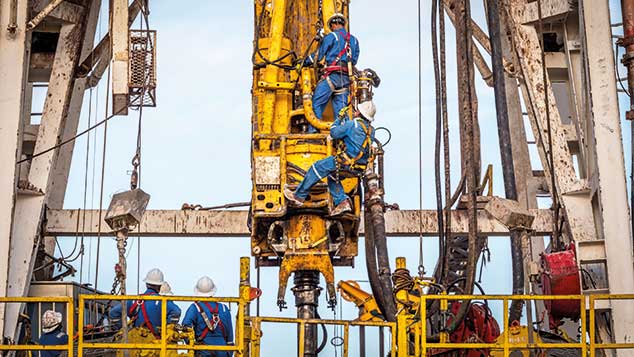
The US has returned to “bona fide energy superpower status”, says David Sheppard in the Financial Times. US oil production eclipsed ten09 million barrels per day (mbpd) last December, according to the US Energy Information Administration, and has nearly caught up with the US record set during the Texas oil boom 47 years ago.
The nadir came in 2008 when around 5mbpd were produced. Only Saudi Arabia and Russia also supply more than 10mbpd, and the US will soon overtake them and become the world’s top oil producer. By late 2019, it will be churning out 11mbpd.
That news, along with last week’s market wobble, took the shine off oil’s rally, with Brent futures slipping from three-year highs of around $70 per barrel after doubling in almost two years. But the overall tone is still bullish. “Wall Street will always do its bit” to drum up enthusiasm, says Gaurav Sharma on Forbes. Goldman Sachs predicts a climb of more than $80 in the next six months, while JP Morgan sees Brent averaging $70 – almost 50% higher than its October forecast.
Just as some commentators may have been too bearish last year, though, the optimism now looks to be overdone. The output-cut pact between Opec and Russia has removed much of the glut that developed in the past three years. Demand has risen faster than anticipated now the global economy has gained strength. Meanwhile, the Saudis’ insistence that shale has been overhyped looks, erm, overhyped.
Shale changed the game
“US shale, in the past decade, is one of the biggest game-changers in oil production history,” says the International Energy Agency (IEA). It predicted non-Opec supply growth of 1.7mbpd in 2018, compared to demand growth of 1.3mbpd. “In other words, the IEA says the oil market will once again be oversupplied largely because of US shale,” says Nick Cunningham on OilPrice.com.
Every time the price strengthens there is “a near-immediate uptick” in US drilling rig counts, says Sharma. Shale producers cut costs and improved drilling techniques in recent years, so they can boost production quickly if prices make it worthwhile.
In the longer term, expect more oil: the US has 91.1 billion economically recoverable barrels of oil reserves. The upshot? As long as oil doesn’t fall under $40 (which it won’t do because the demand for it is too solid), then US shale will be “fine”. Opec’s bid to create an oil price floor of $60 “remains under a medium-term, if not short-term, threat.